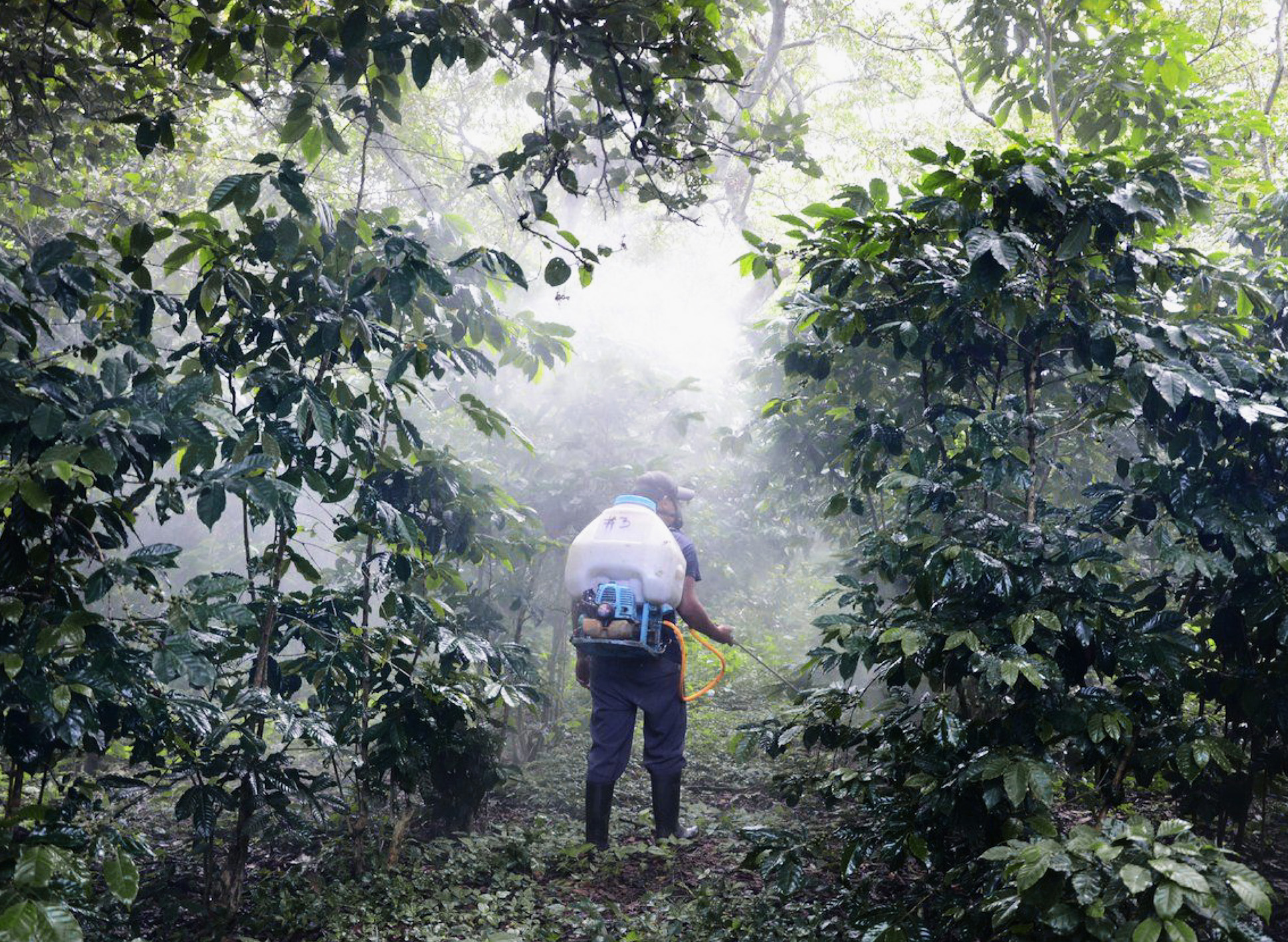مكافحة الآفات باستخدام الكيماويات
Whether they use organic or conventional fungicides, farmers’ common approach to control of leaf rust tends to be to prevention rather than a cure. Farmers who can afford them will apply fungicidal sprays several times per year. According to Alvaro Gatain, former head of Cenicafe (Colombia’s national coffee research organisation), the cost for such sprays can amount to as much as US$400 per hectare per year.
Leonardo Henao explains to us that he has reduced the cost of leaf rust treatment from US$80 per hectare to as little as US$1 per hectare, using a homemade foliar (leaf) spray he calls polisulfuro de calcio (lime sulphur). This extract of ground bones and sulphur is boiled up for around 20 minutes, left for 24 hours to cool, and then applied to coffee plant leaves.
Most conventional and organic treatments are copper-based foliar sprays. The most common formula is copper sulphate, which is then mixed with calcium hydroxide (aka slaked lime) to produce a common fungicide known as Bordeaux mixture. This product prevents spores from germinating. An infestation of a plant can occur in just hours after spores hatch, and thus to prevent an outbreak, the spray must be present on the leaves before infestation. The copper in this product eventually builds up as a pollutant after prolonged use, so it is not regarded as a long-term maintenance product.
ويجب رش هذه المبيدات على سطح الأوراق، وخاصة الجوانب السفلية حيث تنمو أبواغ الفطريات، لضمان فعاليتها. وقد يصعب التأكد من تغطية المبيد للأوراق بشكل كامل، بالإضافة إلى أن الأمطار ستغسل المبيدات في غضون أسابيع قليلة، لذلك، فقد شاع استخدام خمسة طرق مختلفة للرش.
 This chart shows a list of chemicals recommended for the control of coffee leaf rust and coffee berry disease. Source: T.A.
This chart shows a list of chemicals recommended for the control of coffee leaf rust and coffee berry disease. Source: T.A.
